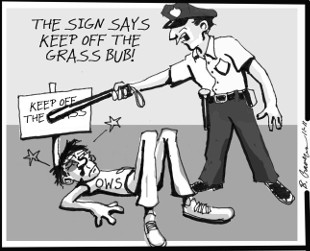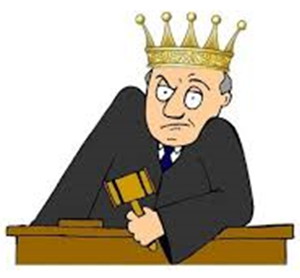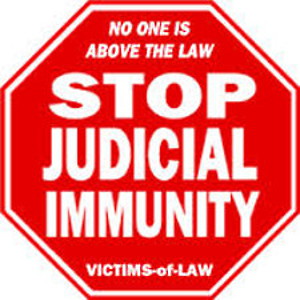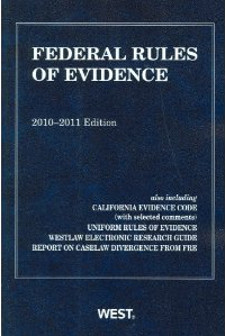 I did this page because a transcript I had intended to rely on, no longer contained what I remembered Judge Vigil saying. That reminded me that Judge Hall had ignored rules in his eagerness to rule against me and worse, a court mediator had told me that Judge Hall had apparently had a transcript altered.
I did this page because a transcript I had intended to rely on, no longer contained what I remembered Judge Vigil saying. That reminded me that Judge Hall had ignored rules in his eagerness to rule against me and worse, a court mediator had told me that Judge Hall had apparently had a transcript altered.
Judge Hall ~ Read more.
One would think that a transcript discovered to have been tampered with or inadvertently altered could have serious repercussions for a court case and for the reporters and other legal professionals involved. However, if it is the judge who has had it altered then absolute immunity kicks in.
When I was new to acting as a pro se party, I believed that courts were about Justice and acted in the interests of Justice. However, after I tried to sue Jude Hall the reality became clear.
The problem of wrong actions by judges is not new.
The Judicial Conduct and Disability Act of 1980 (the “Act”) was born out of controversy about constitutional means for achieving judicial accountability, preserving independent decision making powers for Article III judges, and the practical ability of the judicial branch to regulate itself. The Act embodies a compromise of divergent viewpoints… Decentralized Self-Regulation, Accountability, and Judicial Independence under the Federal Judicial Conduct and Disability Act of 1980. University of Pennsylvania Law Review. Read more.
A person can file a complaint against a federal judge with the chief judge of the circuit, via the clerks. The complaint is copied to the judge who is the subject of the complaint. The complaint can be judged to be “frivolous”, or the decision can be that intervening events make the complaint no longer necessary, or a committee can be appointed.
The implication is that I could file a complaint re Judge Jacobvitz in Bankruptcy Court ruling on my case based on the record containing a corrupted copy of my Summary Judgement Motion.
I was able to clearly show that the clerks had corrupted my Summary Judgment Motion beyond recognition when they scanned it. After I discovered the corruption and showed the Court (Judge Jacobvitz) the problem, I asked him to reconsider his decision since it had not been based on the evidence I had submitted. Judge Jacobvitz refused.
Corrupting evidence attached as exhibits to a Motion for Summary Judgment is very similar to tampering with a transcript, since in both cases the outcome of the case is affected.
Should I complain? LOL. The question makes me laugh because it assumes that I’ve learned nothing from my experience with courts, Courts protect their own. Retaliation against people attacking judges is likely to be severe.
 Risky to Challenge a Judge
Risky to Challenge a Judge
From my experience, it’s foolish to challenge a judge. But, it’s only by acts of bravery, however foolish, that change can be achieved.
Pangman accused a judge and suffered as a result. Basically, during a hearing but prior to announcing the decision, Judge Gerlach had admonished Attorney Pangman for what the judge considered inappropriate behavior in the courtroom. That admonishment, which Pangman considered grounds for his appeal, did not appear in the reporter’s writing. Read more. The authorities decided for the judge, saying Pangman’s statement was determined to be “false”. Basically, I guess the judge denied it and that was that.
“Attorney Pangman appealed from the findings and conclusions that he engaged in professional misconduct by accusing a trial judge of having tampered with a court record by directing a court reporter to remove portions of the official transcript of a hearing and of otherwise intentionally interfering with his access to a complete hearing transcript for purposes of appeal and by making comments demeaning to the judicial system and engaging in disruptive conduct in a court proceeding.”¶2. On the basis of the facts properly found by the referee and the conclusions based on those facts, we determine that Attorney Pangman made statements concerning the integrity of a trial judge that were found to be false with reckless disregard as to their truth or falsity, in violation of SCR 20:8.2(a) , when he accused the judge of having directed a court reporter to remove portions of an official hearing transcript and of otherwise obstructing the availability of a complete transcript, with the intention of “sanitizing” the record and interfering with Attorney Pangman’s announced intention to seek appellate relief. Attorney Pangman also engaged in conduct with the intention of disrupting the court, in violation of SCR 20:3.5(c), and by that conduct and his statements in connection with it he failed to maintain the respect due to courts of justice and judicial officers, as required by the Attorney’s Oath, SCR 40.15. As set forth in SCR 20:8.4(g), an attorney’s violation of the Attorney’s Oath constitutes professional misconduct.
¶3. As discipline for that professional misconduct, we suspend Attorney Pangman’s license to practice law for a period of 90 days, not the minimum six-month period recommended by the referee…
¶4. Attorney Pangman was admitted to practice law in Wisconsin in 1983 and practices in Waukesha. He has not been the subject of a prior disciplinary proceeding. The referee in this proceeding, Timothy Vocke, reserve judge, made findings of fact and conclusions of law following an evidentiary hearing.” Read more
Well, if Pangman got disciplined for saying the judge had the transcript altered, I’m sure that means my chances of being able to prove it are reduced. I mean, who’s going to risk their job to challenge a judge?
“conclusions properly found by the referee” reminds me that I complained to New Mexico’s Judicial Commission about Judge Sanchez whose foreclosure judgment of my condo said I had not answered, when in fact my answer had been filed and was on record. The Judicial Commission responded saying it didn’t matter.
Judicial Absolute Immunity
“Judges have long enjoyed absolute immunity from liability in damages for their judicial or adjudicatory acts, primarily in order to protect judicial independence by insulating judges from vexatious actions by disgruntled litigants. Truly judicial acts, however, must be distinguished from the administrative, legislative, or executive functions that judges may occasionally be assigned by law to perform. It is the nature of the function performed – adjudication – rather than the identity of the actor who performed it – a judge – that determines whether absolute immunity attaches to the act.” U.S. Supreme Court, Forrester v. White, 484 U.S. 219 (1988)
 Judge Free to Order Excessive Force
Judge Free to Order Excessive Force
Howard Waco, a Los Angeles County public defender, filed suit in the US District Court for Section 1983 violations by Raymond Mireles, a judge of the California Superior Court, and two police officers.
Waco alleged that after he failed to appear for the initial call of Judge Mireles’ morning calendar, the judge, “angered by the absence of attorneys from his courtroom,” ordered the police defendants “to forcibly and with excessive force seize and bring plaintiff into his courtroom.
The officers violently seized Waco and removed him backwards from another courtroom where he was waiting to appear, cursed him, and called him “vulgar and offensive names,” then “without necessity slammed” him through the doors and swinging gates into Judge Mireles’ courtroom.
Judge Mireles knowingly and deliberately approved and ratified each of the afore-described acts.
Initially Judge Mireles and the police were held liable and accountable, but he US Supreme Court wrote of absolute judicial immunity,
“[O]ur cases make clear that the immunity is overcome in only two sets of circumstances. First, a judge is not immune from liability for nonjudicial actions, i. e., actions not taken in the judge’s judicial capacity. Forrester v. White, 484 U. S., at 227-229; Stump v. Sparkman, 435 U. S., at 360.
Second, a judge is not immune for actions, though judicial in nature, taken in the complete absence of all jurisdiction. Id., at 356-357; Bradley v. Fisher, 13 Wall., at 351.
We conclude that the Court of Appeals erred in ruling that Judge Mireles’ alleged actions were not taken in his judicial capacity…
Of course, a judge’s direction to police officers to carry out a judicial order with excessive force is not a “function normally performed by a judge.” Stump v. Sparkman, 435 U. S., at 362. But if only the particular act in question were to be scrutinized, then any mistake of a judge in excess of his authority would become a “nonjudicial” act, because an improper or erroneous act cannot be said to be normally performed by a judge. If judicial immunity means anything, it means that a judge “will not be deprived of immunity because the action he took was in error … or was in excess of his authority.” Id., at 356. See also Forrester v. White, 484 U. S., at 227 (a judicial act “does not become less judicial by virtue of an allegation of malice or corruption of motive”)…
Nor does the fact that Judge Mireles’ order was carried out by police officers somehow transform his action from “judicial” to “executive” in character. As Forrrester instructs, it is “the nature of the function performed, not the identity of the actor who performed it, that inform[s] our immunity analysis.” 484 U. S., at 229. A judge’s direction to an executive officer to bring counsel before the court is no more executive in character than a judge’s issuance of a warrant for an executive officer to search a home. See Burns v. Reed, 500 U. S. 478, 492 (1991) (“[T]he issuance of a search warrant is unquestionably a judicial act”).
Because the Court of Appeals concluded that Judge Mireles did not act in his judicial capacity, the court did not reach the second part of the immunity inquiry: whether Judge Mireles’ actions were taken in the complete absence of all jurisdiction. We have little trouble concluding that they were not. If Judge Mireles authorized and ratified the police officers’ use of excessive force, he acted in excess of his authority. But such an action-taken in the very aid of the judge’s jurisdiction over a matter before him-cannot be said to have been taken in the absence of jurisdiction.
The petition for certiorari is granted, and the judgment of the Court of Appeals is reversed.
 Judges are Absolutely Immune
Judges are Absolutely Immune
“When Martin approached the bench unasked, the judge told her to sit down, twice. She refused, and the judge sent for a police officer. As Officer Hendren entered the courtroom, the judge ordered him to remove Martin. Some struggle ensued, during which Martin was struck in the face by Hendren’s arm or elbow. Holding Martin in contempt, the judge ordered Hendren to “put the cuffs on her.” Martin tried to push Hendren away. Hendren then flipped Martin face down onto the floor, handcuffed her, pulled her to her feet by the handcuffs and her hair, and led her out of court. Martin required ultrasound treatment for an injured shoulder.
After this incident, Martin brought suit under 42 U.S.C. Section 1983 (1994), the Fourteenth Amendment, and state law, claiming excessive force and battery, and naming as defendants Hendren, John R. Gibbs, Hendren’s supervisor Terry M. Luker, and the City of Gravette. After the district court dismissed Gibbs as a misjoined party and transferred the case to the magistrate judge with the parties’ consent, see 28 U.S.C. Section 636(c)(1) (1994), the remaining defendants moved for judgment on the pleadings on Martin’s Fourteenth Amendment claim and summary judgment on the rest. The magistrate judge granted the City’s and Luker’s motions, but denied Hendren’s, concluding Hendren is not entitled to absolute quasi-judicial immunity. An order denying absolute immunity is immediately appealable, and we review the denial of absolute immunity de novo. See Duty v. City of Springdale, Ark., 42 F.3d 460, 462 (8th Cir. 1994) (per curiam)…
“Judges are absolutely immune from suit for money damages when they act in their judicial capacity, unless their actions are “taken in the complete absence of all jurisdiction.” Duty v. City of Springdale, Ark., 42 F.3d 460, at 462.”
The Duty case is often cited, but it is not a U.S. Supreme Court case, rather, it is from Arkansas. I’m sorry if that reminds me of former President Clinton, and not in a good way.
If I, as a pro se party saw this case used against me in some other circuit I would object because the case is not available on the Internet as it would be if it were a U.S. Supreme Court case. Not that that will make a whit of difference. But, it should.
It should be unlawful to use case law against a pro se party that is not readily available for the party to read. However, given the overwhelming prejudice against pro se parties, the objection will probably be disregarded, which is worse than being ruled against, since you can’t appeal what isn’t in writing.
 Losing Absolute Immunity
Losing Absolute Immunity
So far there’s been no stopping judicial immunity, however it’s good to know that it can be lost.
“In a suit against an officer for an alleged violation of a constitutional right, the requisites of a qualified immunity defense must be considered in proper sequence. Where the defendant seeks qualified immunity, a ruling on that issue should be made early in the proceedings so that the costs and expenses of trial are avoided where the defense is dispositive. Qualified immunity is “an entitlement not to stand trial or face the other burdens of litigation.” Mitchell v. Forsyth, 472 U. S. 511, 526 (1985). The privilege is “an immunity from suit rather than a mere defense to liability; and like an absolute immunity, it is effectively lost if a case is erroneously permitted to go to trial.” Ibid. As a result, “we repeatedly have stressed the importance of resolving immunity questions at the earliest possible stage in litigation.” Hunter v. Bryant, 502 U. S. 224, 227 (1991) (per curiam).” Saucier v. Katz et al. 533 U.S. 194 (2000)
LAS VEGAS—Nevada attorney James Wray docketed a Petition for a Writ of Certiorari, specifically asking the U.S. Supreme Court to visit the topic of absolute judicial immunity, which allows judges to evade lawsuits even when their actions are intentionally and deliberately malicious, fraudulent and corrupt.
Wray is hopeful that the petition, Wray v. Johnson (#05-1197), will spur the Supreme Court to overrule the doctrine of total judicial immunity. Petitions for writ of certiorari are issued by a superior court to one of inferior jurisdiction to obtain and review the record of a particular case.
“While the U.S. Supreme Court is not required to hear any such case presented to it, and because they grant only a very small portion of such petitions, we’re hopeful that a national outpouring of letters from the public to support this petition might encourage the court to hear the matter,” Juli T. Star-Alexander,said. Read more.
I find myself wondering as I read this, if a court would change a transcript, then would it be the right body to decide if a transcript had been changed?
“The Petitioner also contends that tapes and transcripts of his interrogation were tampered with in that portions where Petitioner had asked for an attorney and had been
threatened were eliminated from the tapes and transcripts. (D.I. 2 at 15-16).The Superior Court addressed this matter in relation to Petitioner’s ineffective assistance of counsel claims. The Superior Court watched the tapes in their entirety and found nothing to suggest that portions of the tapes were erased. See Kirk, ID No. 9612002650-R1 at *3. Additionally, the court noted that Petitioner referred to blips in the tapes where police had allegedly erased Petitioner’s requests for an attorney and to cease the interview. The court found that no such blips were either visible or audible. Id. at *3 n.12. Again, the Court notes that the Superior Court rejected Petitioner’s claim as lacking any factual merit. The Court concludes that Petitioner has not rebutted this presumption of correctness. Therefore, the claim must be dismissed.”
Authentication
Mrs. Doerman failed to follow procedure. She argues submitted evidence was omitted from the record, but did not provide a copy of this to the trial court in order to have the record corrected. She argues comments made prior to the hearing were not transcribed, and part of a transcript contains “not audible.” Although only a small potion was inaudible, Mrs. Doerman failed to follow the proper procedure to supplement the record. She further alleges in her brief that the judge concealed motions and transcripts and tampered with the file. She also alleges that ex parte conversations were recorded and she can only clarify the record by calling the participants as witnesses.
# At a hearing on July 17, 2001, the court discussed the various pending motions filed by Mrs. Doerman. Mrs. Doerman wanted to have a hearing to review all of the problems with the transcripts. The trial court discussed scheduling the hearing on September 5 and 6. Mrs. Doerman argued that the court was depriving her of a hearing because she wanted the issue heard immediately. She also argued that the September date would be too late for her appeal. The record contains a notice that the hearing was later rescheduled to another date. No further evidence is contained in the record before us regarding correction of the record.
# It is Mrs. Doerman’s responsibility to provide us with a record that is adequate to support any claimed errors. Universal Bank v. McCafferty (1993), 88 Ohio App.3d 556.
It is unclear if Mrs. Doerman’s motion was specifically ruled on.If the trial court denied or failed to rule on Mrs. Doerman’s motions, she could have filed a motion before this court to have the record corrected. State ex rel. Hunter v. Cuyahoga County Court of Common Pleas, 88 Ohio St.3d 176, 177, 2000-Ohio-285.
# Furthermore, we find that even if Mrs. Doerman had properly raised these issues, and the transcripts had been corrected to reflect the allegations in her brief, Mrs. Doerman’s arguments still fail to evidence prejudice in the trial court’s decision. The failure to provide a complete transcript does not always deny an appellant an effective appeal. State v. Nichols (Mar. 2, 2000), Cuyahoga App. No. 75605, 75606. Many of Mrs. Doerman’s arguments, including those regarding ex parte communications, are merely general assertions that the record is incomplete or incorrect, and do not demonstrate prejudice. Any material alleged missing or incorrect must have been utilized by the trial court in making its decision. See McGeorge v. McGeorge (May 22, 2001), Franklin App. No. 00AP-1151. As such, this court finds the record before it is adequate for review. See Nichols. As previously mentioned, the trial court’s decision discusses the evidence relied upon and Mr. Doerman’s arguments, even if substantiated, would not change our determination that the decision was not an abuse of discretion.
Read this story. Doesn’t our judicial system sound like a joke? I copied the story because of the mention of tampering with transcripts.
Yesterday, some enterprising ~Patriot evidently tried to distribute leaflets of the U.S. ~Constitution in the courthouse. You know, it’s illegal to try to influence jurors, right? Anyway, the judge addressed the jury out loud in the courtroom, as follows: “Have any of you seen this? (She held up a copy of the pamphlet.) If you see one of these, you are to ignore the contents.” Now I just heard that on the radio, so I may have a word or two wrong. But Nancy said this statement by the judge would have to appear on the court transcript. You will note the judge was careful not to say she was talking about the U.S. Constitution! Actually, I’ve read of cases where the transcripts of trials have been tampered with.
Think about it ~
To rely on the assumption that judges are men of fortitude and that no judge ‘worthy of the name’ would be influenced in his decision by a publication directed toward a particular disposition of a pending litigation, is to say in effect that the Due Process Clause precludes a State from believing that there may be such a psychological danger, short of the fantastic situation where a judge confesses that he decided as he did because of newspaper pressure, or avows that he came awfully close to being derelict in his judicial duty because of such pressure. Craig v. Harney 331 U.S. 367 (1947) Read case.
Free Trials
Try Amazon Music Unlimited 30-Day Free Trial
Sound Recordings As Evidence
I finally found something really specific!
 FEDERAL RULE OF EVIDENCE 901 (A) PROVIDES in general terms that the requirement of authentication or identification as a proffered proof sufficient to support a finding that the matter in question is what its proponent claims it to be. A foundation for authentication of sound recordings was established in the federal courts in United States v. McKeever,*1* and upheld in cases such as United States v. McMillan.*2* In McMillan the court ruled that where a government agent testified that he heard the voice .of an informant at all times when he was making a recording of a telephone conversation, that this part of the conversation was accurate…
FEDERAL RULE OF EVIDENCE 901 (A) PROVIDES in general terms that the requirement of authentication or identification as a proffered proof sufficient to support a finding that the matter in question is what its proponent claims it to be. A foundation for authentication of sound recordings was established in the federal courts in United States v. McKeever,*1* and upheld in cases such as United States v. McMillan.*2* In McMillan the court ruled that where a government agent testified that he heard the voice .of an informant at all times when he was making a recording of a telephone conversation, that this part of the conversation was accurate…
WHEN AN AUDIO TAPE IS SUSPECTED OF HAVING BEEN TAMPERED with, it may be forwarded to a qualified forensic audio specialist for authentication. Prosecutors often request investigation of deficiencies in the previously mentioned process.
Examples of such problems are:
* Credibility questions relating to the tape recorder operator
* Chain-of-custody contradictions
* Differences between the content of the tape and testimony of what was said.
Most often, however, a forensic expert is contacted when the tape is believed to have been altered or tampered with. Due to the nature of the allegations surrounding tampering issues, the examiner will requirements specific items from the party.
The Federal Bureau of Investigation, for example, has a protocol of required information, including:
* The original tape
* The tape recorders and related components used to produce the recording
* Written records of any damage or maintenance done to the recorders, accessories and other submitted equipment
* A derailed statement from the person or persons who made the recording, describing exactly how it was produced and the conditions that existed at the time, such as:
1. Power source, including a portable generator or drycell batteries;
2. Input, such as telephone, radio frequency
transmitter/receiver, miniature microphone, etc.;
3. Environment, such as telephone transmission line, restaurant, apartment, street, etc.;
4. Background noises, such as television, radio, unrelated conversations, computer games, etc.;
5. Foreground information, such as number of individuals involved in the conversation, general topics of discussion, closeness to microphone, etc.;
6. Magnetic tape, such as brand, format, when purchased, whether previously used;
7. Recorder operation, such as number of times turned on and off in the record mode, type of keyboard or remote
operations for all known recorded events, use of voice-activated features, etc.
* A typed transcript of the entire recording or, if that is not available, transcriptions of the portions in question. The items listed above are examples of what is required by a forensic expert as she begins an examination of questioned audio recordings
Extraneous voices: background voices which at times appear to be as near as the primary voices (these can, at times, even block the primary voices)…
Falsification of Tapes
A QUALIFIED FORENSIC EXPERT DETERMINES AUTHENTICATION by performing a number of scientific tests which detect evidence of tampering or falsification. The four basic types of tampering are these:
* Deletion: the elimination of words or sounds by stopping the tape and over-recording unwanted areas
* Obscuration: the mixing in of sounds of amplitude sufficient to mask waveform patterns which originally would show stops and starts in inappropriate places
* Transformation: the rearranging of words to change content or context
* Synthesis: the adding of words or sounds by artificial means or impersonation.
ELECTROMECHANICAL INDICATIONS OF FALSIFICATION
THESE ARE SOMETIMES REFERRED TO AS “ANOMALIES” AND include the following:
* Gaps: segments in a recording which represent unexplained changes in content or context (a gap can contain buzzing, humming or silence)
* Transients: short, abrupt sounds exemplified by clicks, pops, etc. (transients may indicate tape splicing)
* Fades: gradual loss of volume (fades can cause inaudibility and are considered gaps when the recording becomes fully inaudible)
* Equipment sounds: inconsistencies of context caused by the recording equipment itself (common equipment sounds include hums, static, whistles, and varying pitches)
Detecting Falsifications
A FORENSIC EXPERT IS TRAINED to detect falsifications and to authenticate sound recordings. The expert correlates his observations of anomalies with machine functions to interpret events in the following ways.
* Critical listening: this involves the use of human analytical capabilities to locate anomalies. The forensic expert listens with proper headphones to the original tape using high-quality analytical equipment. He first performs a preliminary overview of the original tape and notes events, including starts, stops, speed fluctuations, and other variations requiring further investigation. He then examines recorded events and categorizes them as environmental or non-environmental. After examining recorded events, the expert analyzes background sounds. He listens for abnormal changes, absences or the presence of environmental sound. The final phase of critical listening is an extensive audit of the foreground information. He concentrates on voices, conversations and other audible sounds. Here anomalies include sudden changes in a person’s voice, abrupt unexplained topic change or strong foreground interruptions indicative of obscuration. The initial forensic process of critical listening provides foundation and direction for later intensive instrumental tests.
.
* Physical inspection: the forensic expert next inspects for tampering with thorough visual inspection of the tape itself. She inspects the housing for pry marks, welding, size, label and date, consistent with the alleged recording date. She also measures the tape and assures that the splicing of the magnetic tape to the leader is consistent with a normal manufacturing process. Any other splices are noted as possible alterations.
.
* Magnetic development: direct visual observation of the “developed” tape is conducted to find track widths, the type of recorder used and the presence or absence of residual speech signals.
.
* Spectrum analysis: specialized computer equipment and programs to produce a visual interpretation of a frequency- versus-amplitude and frequency-versus-amplitude-versus-time displays. This allows the expert to view the entire spectrum or to zoom in on an area of particular interest thereby helping to characterize the
acoustic quality of anomalies and identify their source.
.
* Waveform analysis: a computer generated display representing time-versus-amplitude of recorded sounds in graphic form. With such analysis the expert can often measure signal return time, which reveals how long a recorder had been turned off. He can identify record- mode events, including the measurement of record-to- erase-head distance, determination of the spacing between gaps in multiple-gap erase heads and inspection of the signature shape and spacing of various record event signals.
.
* Recorder performance: various electrical and mechanical measurements of standard and modified recorders for use in finding possible origins of buzz sounds, hum, etc.
Steve Cain, a forensic tape expert, has a website, with interesting pictures and text. Visit site.
Excessive Force image by Cravens ~ View more.
Appealing Wells Fargo Foreclosure
10/8/17 ~ The judge has finally filed his decision arising out of the May 22-24 trial. He once again decided for the lender. He’s not once decided for a homeowner. I need to raise money for the retainer for an appeals lawyer. If you can help, please do. Help with Appeals Lawyer Retainer
Free Trials
Try Amazon Music Unlimited 30-Day Free Trial




